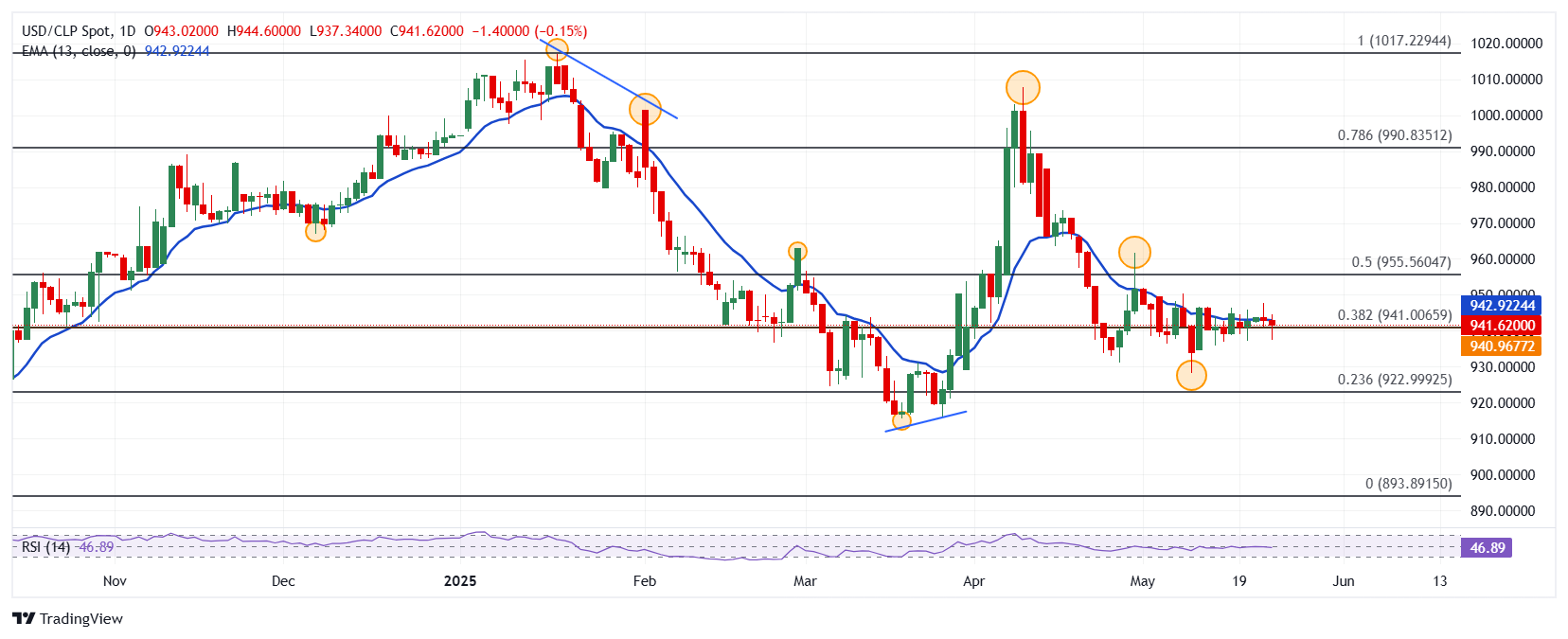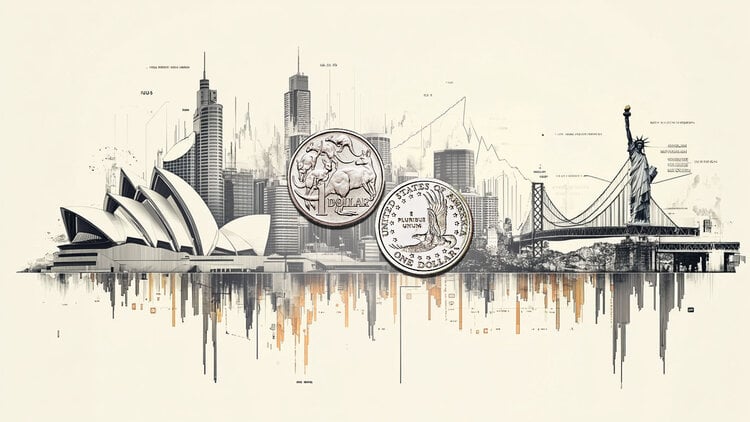- The US dollar goes back to the Chilean peso, currently quoting in 941.44.
- The dollar index (DXY) loses 0.76% in the day, reaching minimums not seen since April 30 at 99.14.
- The price of copper shoots 3.66% daily, reaching maximums of April 29 in 4,7939.
- The president of the Fed of St. Louis, Alberto Musalem, showed his concern about the increase in prices for commercial uncertainty.
The USD/CLP established a daily maximum in 944.60, finding aggressive vendors that brought parity to minimum of May 20 in 937.34. At the moment, the USD/CLP falls 0.15%, operating over 941.44.
Chilean weight ends Friday with marginal gains
In the middle of a day with few economic data, Federal Reserve officials take control of the stage. The president of the Fed of St. Louis, Alberto Musalem, said in his speech today that companies expect higher prices by acquiring inputs for their products due to tariff uncertainty, showing their concern to a possible increase in long -term inflation expectations.
On the other hand, Austen Goolsbee, president of the Federal Reserve of Chicago, said that the tariff imposition of 50% to goods from the European Union is a terrifying possibility for supply chains.
In the midst of these comments, the dollar index (DXY) loses 0.76% in the day, visiting April 30 at 99.14, resuming the short -term bassist perspective.
Copper prices shoot 3.66% on the last day of the week, reaching maximums not seen since April 29 at 4,7939, signing its second consecutive rise.
In this scenario, the Chilean weight advances for second consecutive session, while the USD/CLP slides 0.15% daily, operating when writing about 941.44.
Technical levels in the USD/CLP
The USD/CLP reacted down from a short -term resistance given by the maximum of April 30 in 961.65. The following important resistance is at 1,007.73, maximum of April 9. Down, the immediate support is at 928.21, a pivot point of May 9.
USD/CLP daily graphics

US dollar FAQS
The US dollar (USD) is the official currency of the United States of America, and the “de facto” currency of a significant number of other countries where it is in circulation along with local tickets. According to data from 2022, it is the most negotiated currency in the world, with more than 88% of all global currency change operations, which is equivalent to an average of 6.6 billion dollars in daily transactions. After World War II, the USD took over the pound sterling as a world reserve currency.
The most important individual factor that influences the value of the US dollar is monetary policy, which is determined by the Federal Reserve (FED). The Fed has two mandates: to achieve price stability (control inflation) and promote full employment. Its main tool to achieve these two objectives is to adjust interest rates. When prices rise too quickly and inflation exceeds the 2% objective set by the Fed, it rises the types, which favors the price of the dollar. When inflation falls below 2% or the unemployment rate is too high, the Fed can lower interest rates, which weighs on the dollar.
In extreme situations, the Federal Reserve can also print more dollars and promulgate quantitative flexibility (QE). The QE is the process by which the Fed substantially increases the flow of credit in a stuck financial system. It is an unconventional policy measure that is used when the credit has been exhausted because banks do not lend each other (for fear of the default of the counterparts). It is the last resort when it is unlikely that a simple decrease in interest rates will achieve the necessary result. It was the weapon chosen by the Fed to combat the contraction of the credit that occurred during the great financial crisis of 2008. It is that the Fed prints more dollars and uses them to buy bonds of the US government, mainly of financial institutions. Which usually leads to a weakening of the US dollar.
The quantitative hardening (QT) is the reverse process for which the Federal Reserve stops buying bonds from financial institutions and does not reinvote the capital of the wallet values that overcome in new purchases. It is usually positive for the US dollar.
Source: Fx Street
I am Joshua Winder, a senior-level journalist and editor at World Stock Market. I specialize in covering news related to the stock market and economic trends. With more than 8 years of experience in this field, I have become an expert in financial reporting.







